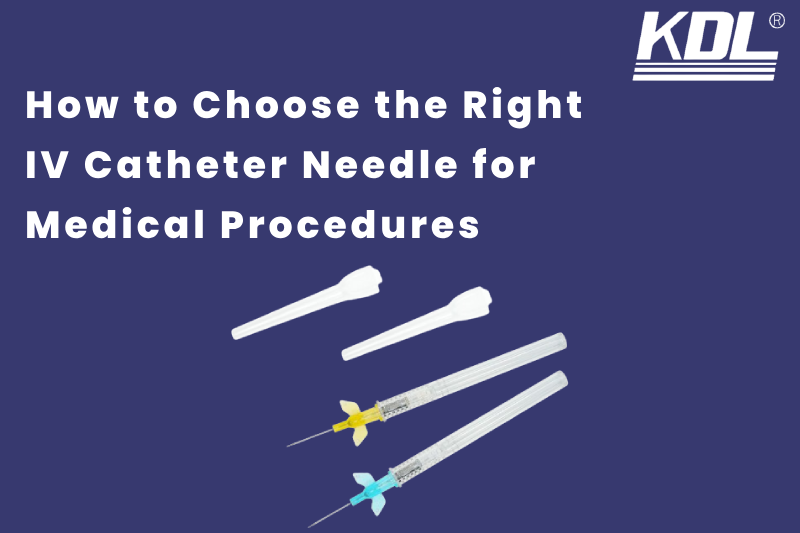
Are you a healthcare professional looking to improve your skills in choosing the right IV catheter needle for different medical procedures? Look no further! In this blog post, we will guide you through the importance of selecting the right IV catheter needle, factors to consider when choosing one, types of IV catheter needles available, and tips for ensuring proper insertion and use. Let’s dive in!
What is IV catheter needles
Intravenous catheter needles are crucial medical devices used to deliver fluids, medications, or blood products directly into a patient’s bloodstream. Understanding the purpose and function of these needles is essential for medical professionals to provide effective care. In this blog post, we will explore the importance of intravenous catheter needles in healthcare settings.
Importance of Choosing the Right IV Catheter Needle
Selecting the right Intravenous catheter needle is vital for the comfort and safety of the patient. Using the wrong size or type of needle can lead to complications such as infiltration, phlebitis, or even nerve damage. By choosing the appropriate IV catheter needle, you can minimize the risk of these complications and ensure a smooth and successful procedure.
Factors to Consider When Selecting an IV Catheter Needle
Gauge size
IV catheters come in various gauge sizes, which determine the diameter of the needle. Smaller gauge numbers indicate larger needle diameters and vice versa. The choice of gauge depends on factors such as patient age, vein size, and the intended use of the catheter. Larger gauge needles allow for faster fluid administration but may cause more discomfort during insertion.
Needle length
The length of the needle should be appropriate for the patient’s body size and the depth of the target vein. Longer needles may be necessary for patients with thicker subcutaneous tissue or deeper veins, while shorter needles may suffice for pediatric patients with fragile veins.
Material
IV catheter needles are typically made from stainless steel or plastic. Stainless steel needles are durable and provide better penetration, while plastic needles may be more comfortable for the patient and reduce the risk of needlestick injuries for healthcare providers.
Bevel type
The bevel of the needle refers to the angled surface at the tip. Different bevel designs can affect insertion ease, the angle of penetration, and the risk of tissue trauma. Bevel types include short, long, and ultra-sharp. Ultra-sharp bevels may reduce patient discomfort and improve first-stick success rates.
Catheter design
Consider the design features of the catheter, such as the presence of a safety mechanism to prevent accidental needlesticks, a flashback chamber to confirm venous access, and a flexible catheter material that reduces the risk of kinking or vein irritation.
Flow rate compatibility
Ensure that the selected catheter needle can accommodate the required flow rate of intravenous fluids and medications. Larger gauge needles allow for faster flow rates, whereas smaller gauge needles may be suitable for slower infusions or delicate veins.
Manufacturer reputation and product quality
Choose IV catheter needles from reputable manufacturers known for producing high-quality medical devices that meet safety standards and regulatory requirements.
Cost considerations
Balancing the quality and features of the IV catheter needle with budgetary constraints is important. While cost-effective options may be available, prioritize patient safety and comfort when making purchasing decisions.
Healthcare provider experience and preference
Consider the preferences and expertise of the healthcare professionals who will be using the IV catheter needles. Providing training and support for staff can help ensure proper insertion technique and minimize complications.
Types of IV Catheter Needles Available
There are various types of Intravenous catheter needles available, including short peripheral catheters, midline catheters, and central venous catheters. Each type has its own indications and limitations, so it is essential to choose the most suitable option based on the patient’s needs and the nature of the procedure.
Read More : The Benefits of Using Huber Needles for Long-Term IV Therapy
Choosing the Right IV Catheter Needle for Specific Medical Procedures
Different medical procedures require different types of Intravenous catheter needles. For example, a short peripheral catheter may be sufficient for a routine blood draw, while a central venous catheter may be necessary for long-term chemotherapy or parenteral nutrition. It is important to match the needle type to the specific requirements of the procedure to ensure optimal outcomes.
Tips for Ensuring Proper Insertion and Use of IV Catheter Needle
Proper insertion and use of an IV catheter needle are essential for the success of the procedure. To ensure a smooth and safe insertion, it is important to follow aseptic technique, secure the catheter properly, and monitor the site for any signs of complications. Regular assessment and maintenance of the IV catheter are also crucial to prevent infections and other complications.
Conclusion
Choosing the right IV catheter needle is a critical aspect of medical procedures that require intravenous access. By considering the factors mentioned above and following the tips provided, you can ensure the safety and comfort of your patients and achieve successful outcomes. Remember, the right needle can make all the difference in delivering quality care.
 +86-791-8686-1216
+86-791-8686-1216 

